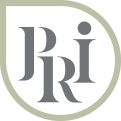What’s Behind the Behavior?
When I was teaching, each child in the classroom acted differently. Their behaviors were a way of communicating: of sharing thoughts, feelings, and needs that were maybe not being met. As leaders, we can look at our teams similarly to how children act in classrooms. Look closely at your team and think of their behaviors. A close exploration of their actions can help you understand their beliefs and so much more. Elena Aguilar talks about transformational coaching and the 3B’s, behaviors, beliefs, and being. She talks about behaviors (instructional practices and skills) leading to effective practice, exploring the beliefs (about teaching, learning, children, and families) that you operate from, and ways of being, “the ways in which our sense of self and identity impact our experience”. What is your team telling you, both as individuals and as a group through their behaviors?
Questions to ask as you observe your team:
- What is the need behind their behavior?

